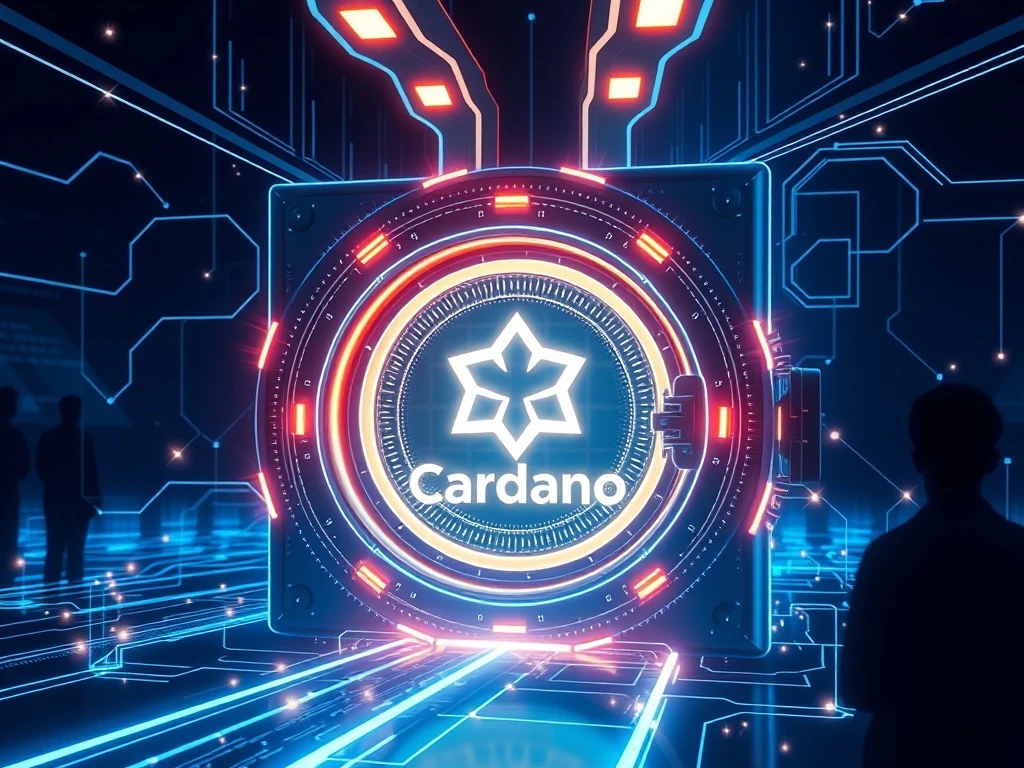Cardano Treasury Approves Historic $71M for Crucial Network Upgrades

In a landmark moment for the Cardano ecosystem, the community has cast a decisive vote, approving a significant allocation of 96 million ADA from its treasury, equivalent to a staggering $71 million. This pivotal decision greenlights a comprehensive 12-month development plan spearheaded by Input Output Global (IOG), Cardano’s core development team. For anyone invested in the future of decentralized finance and blockchain innovation, this approval signals a robust commitment to enhancing Cardano’s capabilities and securing its position in the competitive crypto landscape. This isn’t just about spending; it’s about investing in the future of Cardano network upgrades.
Cardano Treasury: A New Era of Community-Led Funding
The recent approval of 96 million ADA from the Cardano treasury marks a significant milestone, representing the first time the community has directly authorized core development funding for the network. IOG’s proposal, aimed at bolstering the blockchain’s foundational infrastructure, passed with an overwhelming 74% in favor, garnering 200 votes against a mere six dissenting and seven abstaining. This democratic process underscores Cardano’s commitment to decentralized governance, empowering its community to shape the network’s evolution. The substantial ADA funding is earmarked for critical enhancements that promise to redefine the user and developer experience on Cardano.
This substantial investment is not a blank check. The funding mechanism is structured to ensure accountability and transparency, with payments being milestone-based. Intersect, a Cardano member-based organization, will serve as an independent administrator, overseeing the release of funds as upgrades are delivered. Further layers of oversight include smart contracts and a dedicated committee, ensuring rigorous management of the allocated resources. IOG has also committed to publishing monthly updates, detailed engineering timesheets, and quarterly budget breakdowns, setting a new standard for transparency in blockchain development.
Accelerating Cardano Network Upgrades: What’s on the Horizon?
The 12-month development roadmap funded by the Cardano treasury focuses on three core pillars: enhancing scalability, improving the developer experience, and boosting interoperability. These are not just buzzwords; they represent tangible improvements designed to make Cardano more robust, efficient, and accessible. Key projects within IOG’s proposal include:
- Hydra: A highly anticipated protocol designed to facilitate fast, low-cost transactions. Hydra aims to significantly increase Cardano’s throughput, addressing one of the common challenges faced by blockchain networks as they scale.
- Project Acropolis: This initiative involves a modular re-architecture of the Cardano node. The goal is to achieve greater flexibility and simplify the onboarding process for new core developers, fostering a more vibrant and diverse development ecosystem.
- Performance Optimizations: Efforts are underway to lower RAM usage and reduce operational costs for stake pool operators. These optimizations are crucial for maintaining the network’s efficiency and decentralization, making it more sustainable for participants.
- Advanced Smart Contracts & Interoperability: IOG is also laying the technical foundations for more sophisticated smart contracts and seamless interoperability with other blockchain networks. This is vital for Cardano’s long-term vision of becoming a central hub in the multi-chain universe.
Currently, Cardano boasts an average transaction cost of approximately 0.34 ADA and an average block time of 20 seconds. These upgrades are poised to further optimize these metrics, making Cardano an even more attractive platform for decentralized applications and digital transactions.
Navigating Community Concerns and Decentralized Governance
While the approval was decisive, the proposal was not without its critics. Prior to the vote, community members voiced significant concerns regarding the funding cost, transparency surrounding team utilization, accountability for fund expenditure, and the delivery of promised outcomes. Some even suggested breaking the proposal into smaller, more manageable goals with separate budgets and individual votes.
This healthy debate is a testament to the principles of decentralized governance that Cardano champions. Tim Harrison, VP of Community and Ecosystem at IOG, acknowledged the significance of this direct community authorization. It highlights a critical aspect of blockchain development: balancing innovation with community oversight. A competing proposal from Cardano’s Technical Steering Committee (TSC) also emerged, though it ultimately did not receive endorsement from Intersect. Adam Rusch, an Intersect board member, emphasized that the final decision rested with the community, reinforcing the power of the ADA holders in steering the network’s direction.
Broader Trends in Blockchain Development: Cardano Leads the Way
Cardano’s commitment to continuous improvement is part of a broader trend within the blockchain industry. Many leading networks are actively pursuing significant upgrades to enhance their capabilities and address evolving demands. For instance:
- Solana: Recently increased its block capacity by 20% to 60 million compute units (CU) and plans further expansion by year-end, focusing on network stability and performance.
- Ethereum: Saw its gas limit increase to nearly 44.92 million, enabling more transactions per block. The Pectra hard fork in May increased data blobs per block and validator staking limits, with the next upgrade, Fusaka, slated for late 2025.
These parallel efforts underscore the ongoing race for scalability, efficiency, and interoperability across the blockchain landscape. Cardano’s proactive approach, backed by its community-driven ADA funding model, positions it as a frontrunner in this exciting era of blockchain development.
The Future is Bright: Empowering Innovation Through Community Consensus
The approval of the $71 million Cardano treasury spend for network upgrades is more than just a financial transaction; it’s a powerful statement about the efficacy of decentralized governance and the community’s unwavering belief in Cardano’s potential. By funding crucial projects like Hydra and Project Acropolis, the community is directly investing in a faster, more scalable, and developer-friendly blockchain. While concerns about transparency and accountability were raised, the structured funding model and IOG’s commitments demonstrate a path forward that addresses these vital issues. This historic vote sets a precedent for how large-scale blockchain development can be funded and governed, proving that collective decision-making can indeed drive monumental progress in the decentralized world. The path is now clear for Cardano to unleash its next wave of innovation, solidifying its role as a leading force in the global blockchain ecosystem.









